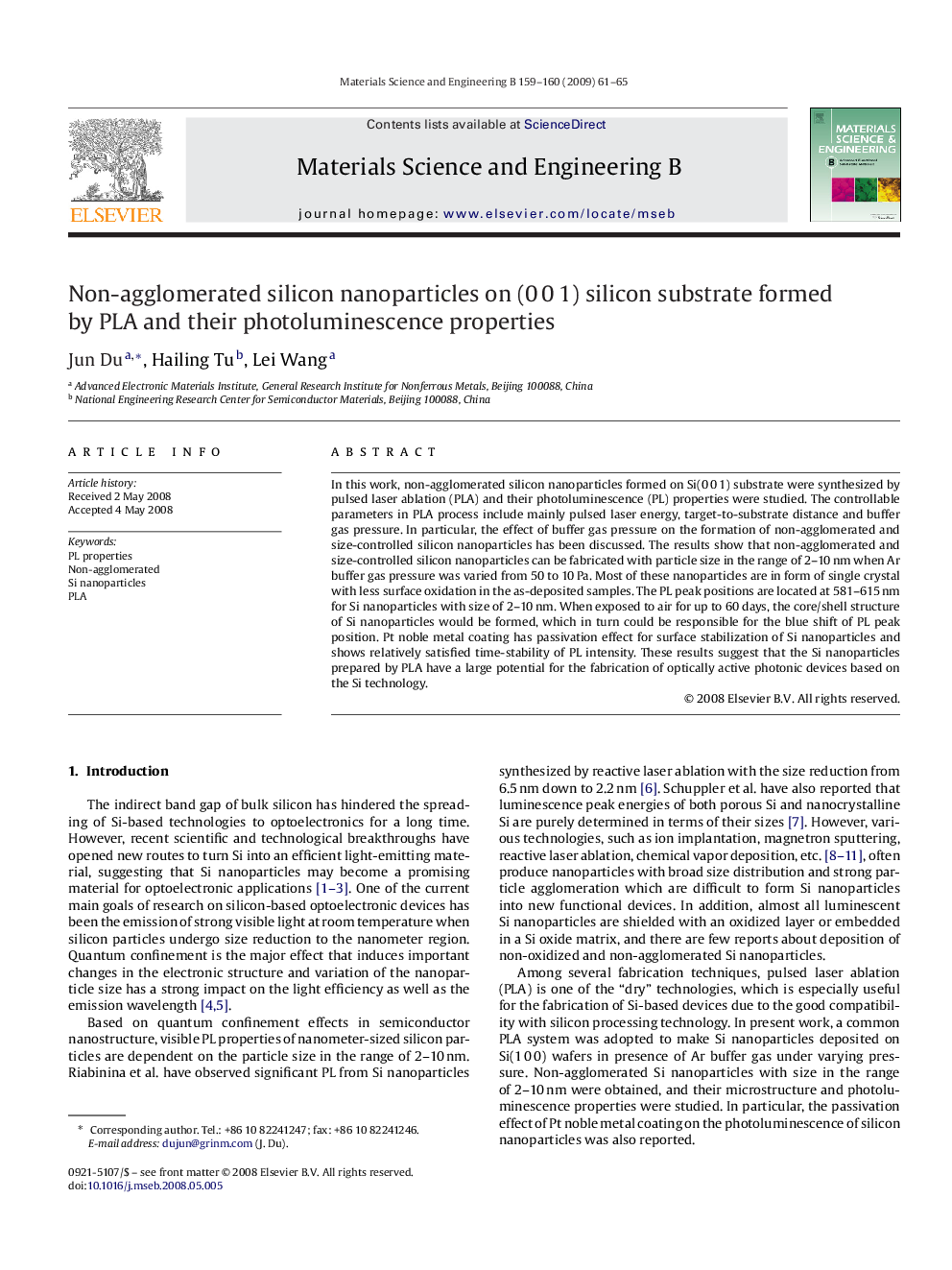| Article ID | Journal | Published Year | Pages | File Type |
|---|---|---|---|---|
| 1530630 | Materials Science and Engineering: B | 2009 | 5 Pages |
Abstract
In this work, non-agglomerated silicon nanoparticles formed on Si(0Â 0Â 1) substrate were synthesized by pulsed laser ablation (PLA) and their photoluminescence (PL) properties were studied. The controllable parameters in PLA process include mainly pulsed laser energy, target-to-substrate distance and buffer gas pressure. In particular, the effect of buffer gas pressure on the formation of non-agglomerated and size-controlled silicon nanoparticles has been discussed. The results show that non-agglomerated and size-controlled silicon nanoparticles can be fabricated with particle size in the range of 2-10Â nm when Ar buffer gas pressure was varied from 50 to 10Â Pa. Most of these nanoparticles are in form of single crystal with less surface oxidation in the as-deposited samples. The PL peak positions are located at 581-615Â nm for Si nanoparticles with size of 2-10Â nm. When exposed to air for up to 60 days, the core/shell structure of Si nanoparticles would be formed, which in turn could be responsible for the blue shift of PL peak position. Pt noble metal coating has passivation effect for surface stabilization of Si nanoparticles and shows relatively satisfied time-stability of PL intensity. These results suggest that the Si nanoparticles prepared by PLA have a large potential for the fabrication of optically active photonic devices based on the Si technology.
Keywords
Related Topics
Physical Sciences and Engineering
Materials Science
Electronic, Optical and Magnetic Materials
Authors
Jun Du, Hailing Tu, Lei Wang,
